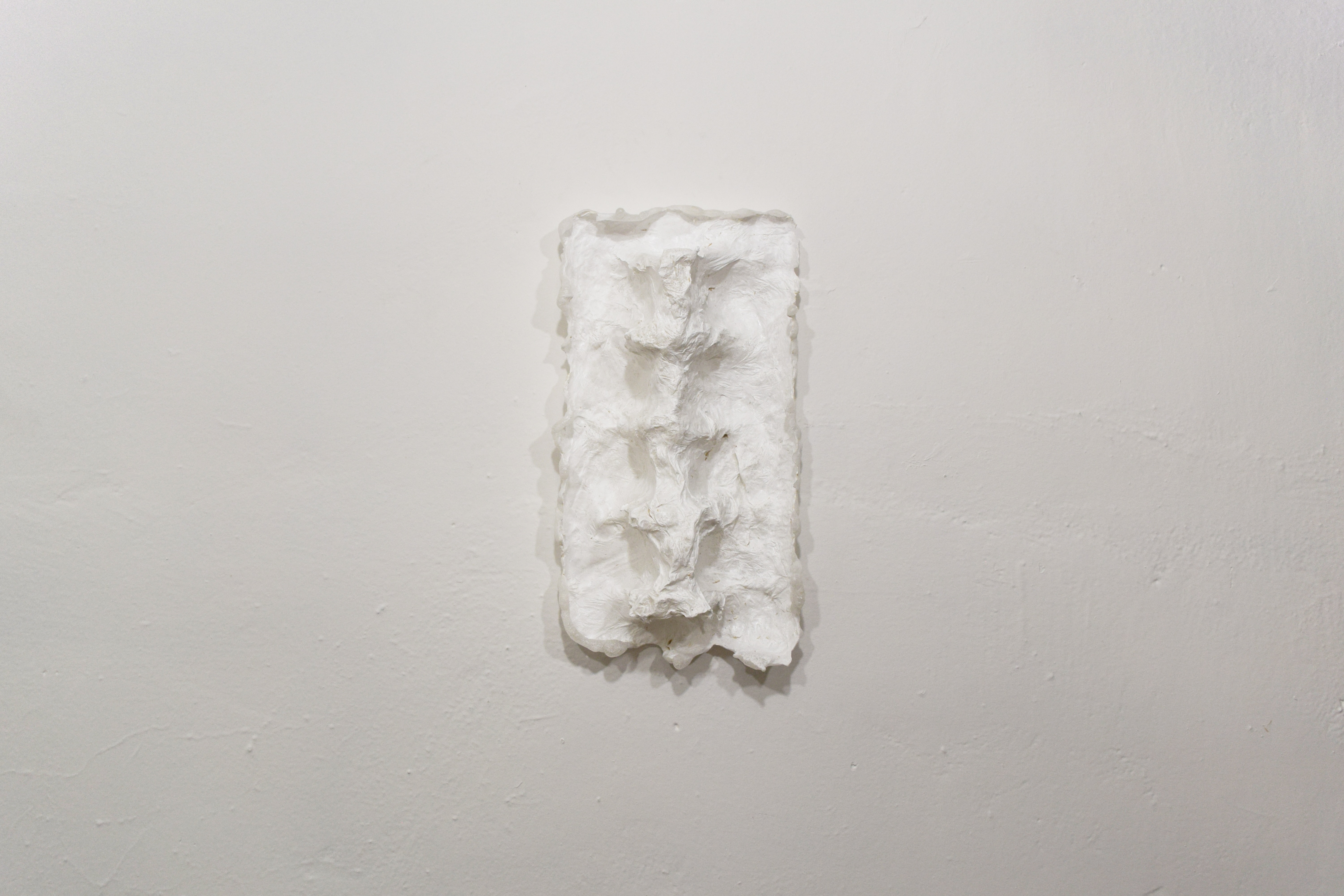
Above the old refrigerator (floor mat edging, 12 1/2 x 4 inches), 2022

Roommate, phone case, book (charcoal, glue, plastic on board, 7 1/2 x 10 inches), 2021

Wine subscription, outdoor chair (styrofoam, acrylic, acetone, approx. 17 x 19 x 6 inches), 2023
Cushion filler (rebonded fabric,12 x 10 1/2 inches), 2023

Gas mask (border control tape, 10 1/4 x 13 inches), 2021

Couch (styrofoam, 7 1/2 x 14 inches), 2023

Living room one (carpet sample, 6 1/4 x 6 1/4 inches), 2023

Rug (padding, 4 x 13 inches), 2023

Textbooks, glass jars (packaging paper, 59 x 59 inches), 2015

Portable humidifier, gift basket, pillow, rechargeable batteries (Text on cardboard, 16 x 17 inches), 2020-2023
My sculptural practice tends to reflect and imply the cost of the built world around us—and the systems that keep it going, from shipping to storage to safety. I harvest these materials from the neighborhoods and homes in which I live, pushing them away from their “leftover” or “periphery” status and staging them as readymades or transforming them into structures mid-decay. The names typically reference the object or space the material once protected or covered.
From styrofoam melted with acetone to rebonded fabric, I find my sculptures help me discover new meaning in what many of us consider “mundane,” “ordinary,” or “obvious”—which are the systems most pernicious to our health, climate, and neighbors. Nearly all processes on Earth are cyclical, for example, but a lot of human processes are illogically linear (i.e. the “end” as landfill, sidewalk, or museum collection). I use my practice as a way to bring these materials “back” into a cycle to consider how they could be presented, and represented, once again. And who knows—maybe one day we stop shipping objects from one continent to another. It could mean I’m ultimately making relics of the present for the future to figure out.